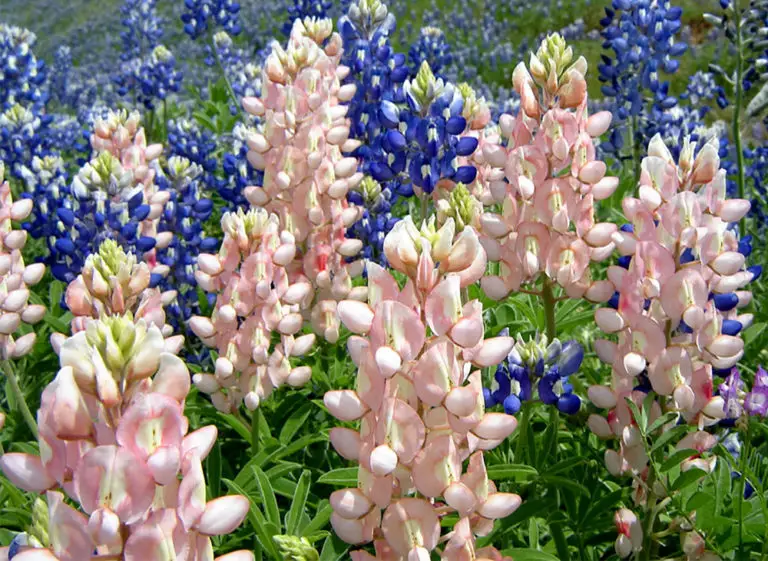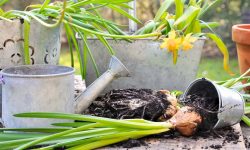Few flowers capture the spirit of Texas as beautifully as the bluebonnet. With their vibrant blue petals and striking appearance across rolling fields, these wildflowers have become a symbol of springtime in the Lone Star State. Every year, thousands of Texans and visitors alike look forward to the breathtaking sight of highways, meadows, and pastures blanketed with waves of blue. The magic of this seasonal bloom does not happen by chance—it is the direct result of planting seeds at the right time and in the right way. Understanding when and how to sow bluebonnet seeds is the first step toward enjoying these iconic blooms in your own garden.
Planting bluebonnet seeds is not just about growing flowers. It is about creating a piece of Texas tradition right outside your door. These hardy plants are well-adapted to the region’s unique climate, but they require proper timing and preparation to thrive. Sow them too late, and they may not germinate in time for spring. Scatter them too early, and heavy heat or rain may hinder their growth. The process may seem simple, but success relies on knowledge and patience. By planting at the right moment, you ensure a dazzling display that celebrates Texas heritage while also supporting local pollinators like bees and butterflies.
Understanding Bluebonnets Before Planting

Bluebonnets, the beloved state flower of Texas, are more than just a pretty wildflower. They are a symbol of pride, resilience, and natural beauty across the Lone Star State. Before you decide when and how to plant their seeds, it is important to understand what makes these flowers unique. Bluebonnets belong to the lupine family, which explains their distinctive pea-like blooms. These flowers thrive in meadows, roadsides, and open fields, covering large stretches of land in breathtaking waves of blue each spring. Their strong connection to Texas culture has made them a favorite for both gardeners and nature enthusiasts.
A key characteristic of bluebonnets is their ability to adapt to challenging conditions. They are naturally suited to withstand hot summers and dry soils, making them an ideal choice for landscapes in the South. However, they also have specific needs, especially during their early stages of growth. Bluebonnets are cool-season annuals, which means they germinate in the fall, grow slowly through winter, and burst into bloom during spring. Understanding this life cycle is essential for successful planting because it affects when seeds should be sown for the best results. Timing is one of the biggest factors that influences how abundant and vibrant the flowers will be.
Another important feature is their relationship with the soil. Bluebonnet seeds have a tough outer coating that naturally delays germination, a survival strategy in the wild. For gardeners, this means extra steps, such as scarification, can help improve success. Bluebonnets also prefer well-drained soils and full sun exposure to thrive. By learning these details before planting, you can create conditions that mimic their natural habitat. This preparation not only ensures healthy growth but also guarantees that your garden will glow with iconic Texas charm when spring arrives.
Best Time of Year to Plant Bluebonnet Seeds
Fall Planting for Stronger Growth
Fall is the most reliable time to plant bluebonnet seeds if you want a garden filled with strong, colorful blooms. Planting in autumn, typically between late September and early November, gives the seeds enough time to germinate before winter sets in. Bluebonnets are hardy wildflowers that benefit from the cool weather, which allows their roots to establish firmly in the soil. As the plants grow underground during the winter months, they become more resilient to drought and early spring heat, ensuring healthier development. This head start makes fall planting the preferred choice for gardeners across Texas and other regions with mild winters.
By the time spring arrives, your bluebonnets will already have a solid root system and will be ready to burst into bloom. This early preparation creates fuller clusters of flowers, extending their beauty throughout the season. Another advantage of fall planting is that it reduces the need for constant watering, as winter rains usually provide enough moisture for steady growth. If you want the iconic fields of blue that resemble Texas highways, fall planting is the best option. It ensures stronger plants, better flower production, and a more reliable display of spring color.
Why Spring Planting is Risky
While many gardeners are tempted to plant bluebonnet seeds in spring, this approach often leads to disappointment. Bluebonnets are adapted to germinate in cool soil, and spring planting may not give them enough time to grow strong before summer heat arrives. If seeds are sown in March or April, they face a race against rising temperatures. As the days quickly get hotter, the young seedlings often become stressed, leading to weak roots and stunted growth. In many cases, they fail to bloom at all, leaving gardeners frustrated after months of effort.
Another challenge with spring planting is water management. Bluebonnet seedlings require consistent moisture to establish, but spring weather can be unpredictable. Heavy rains may drown young plants, while sudden dry spells can cause them to wither before reaching maturity. Even if they survive, their bloom cycle is often shorter and less impressive than those planted in fall. While spring planting might work in cooler northern climates, it is generally too risky in the southern states where bluebonnets thrive. For gardeners seeking dependable results, fall planting remains the key to enjoying healthy plants and abundant blossoms in spring.
Soil Preparation for Bluebonnet Seeds
Preparing the soil properly is one of the most important steps to ensure successful bluebonnet growth. These native wildflowers thrive in well-draining soil, so the first task is to choose a location that does not hold excess water. Heavy clay soils can lead to root rot, while overly rich soils can encourage too much leafy growth at the expense of flowers. Ideally, the soil should be sandy or gravelly, mimicking the natural Texas landscapes where bluebonnets flourish. If your soil is dense, consider amending it with sand, small gravel, or organic compost to improve texture and drainage.
Soil pH also plays a significant role in seed germination and long-term plant health. Bluebonnets prefer a slightly alkaline to neutral pH, usually between 6.5 and 7.5. You can test the soil with a home pH kit and make adjustments if needed by adding lime to raise pH or sulfur to lower it. Preparing the soil in advance gives seeds the right foundation for establishing strong roots before flowering season. Loosening the top few inches of soil also helps seeds make direct contact with the earth, which increases the chance of germination.
Unlike many other garden flowers, bluebonnets actually do best in less fertile soils. Overly fertilized ground can cause lush foliage but limit flower production. For this reason, avoid adding large amounts of nitrogen-rich fertilizers. Instead, focus on creating a light, well-draining bed where seeds can settle naturally. A thin layer of mulch or fine gravel on top can help protect seeds from washing away while still allowing sunlight to reach them. With the right soil preparation, bluebonnet seeds can sprout and thrive, rewarding you with fields of vibrant blooms in the spring.
Step-by-Step Guide to Planting Bluebonnet Seeds
Preparing the Seedbed Correctly
Creating the right seedbed is essential for the successful germination of bluebonnet seeds. Begin by selecting a sunny location with at least eight hours of direct light each day. Bluebonnets thrive in well-drained soils, so avoid heavy clay areas that can retain too much water. Loosen the top few inches of soil to provide a fine texture that allows seeds to settle in securely. It’s also helpful to remove rocks, debris, and compacted layers that may interfere with root growth.
Once the soil is prepared, ensure it is slightly rough rather than overly smooth, as this helps seeds make better contact with the ground. Some gardeners lightly rake the surface to create shallow grooves that improve seed placement. At this stage, you can also consider scarifying the seeds—gently nicking or scratching their hard outer coat to encourage faster germination. Taking these careful steps ensures that your seedbed is primed for strong, even sprouting.
Sowing Seeds the Right Way
When sowing bluebonnet seeds, timing and technique are both crucial. Fall is the best season for planting, as seeds benefit from the cooler temperatures and natural rainfall. Distribute the seeds evenly across the prepared bed, aiming for a natural spread rather than overcrowding. Bluebonnets germinate best when lightly covered, so press the seeds into the soil using a rake or even by walking gently over the area. Avoid burying them too deep, as this can delay or prevent sprouting.
After sowing, water the area lightly to settle the seeds without washing them away. Consistent but not excessive moisture during the first few weeks is vital for germination. Nature often provides sufficient rainfall in fall, but in drier climates, occasional supplemental watering can help. By spacing seeds properly and ensuring good soil contact, you set the stage for healthy seedlings that will grow into a vibrant display of blooms in spring.
Watering Needs for Bluebonnets
Bluebonnets are well adapted to the natural rainfall patterns of Texas and other warm regions, which makes their watering needs relatively low compared to many other garden flowers. During the germination period, however, the soil must remain lightly moist to help seeds sprout successfully. Once seedlings emerge, consistent but moderate watering encourages strong root development. Overwatering should be avoided because bluebonnets dislike soggy soil, and excess moisture can cause seeds to rot or young plants to weaken before establishing themselves fully. Striking a balance between moisture and drainage is key during this early stage.
As plants mature, bluebonnets develop a deep taproot that allows them to access water stored in the soil. This natural adaptation means they require little supplemental watering once established, especially if they receive normal seasonal rainfall. In fact, mature bluebonnets are drought-tolerant and thrive best in slightly dry conditions. Too much water not only encourages fungal diseases but also limits flower production. Providing occasional deep watering during extended dry spells is often sufficient to keep the plants healthy without compromising their ability to flower abundantly.
The frequency and method of watering should also depend on local climate and soil type. Sandy soils dry out faster and may need slightly more frequent watering compared to clay or loamy soils that hold moisture longer. When watering, it is better to soak the soil deeply and less often rather than applying shallow, frequent irrigation. This practice encourages roots to grow deeper, resulting in stronger, more resilient plants. Gardeners should also avoid overhead watering, which can lead to mildew on foliage, and instead direct water at the soil level. By following these practices, you can maintain the perfect water balance for thriving bluebonnets.
Sunlight Requirements for Bluebonnets
Bluebonnets are sun-loving plants that thrive best when given full exposure to light throughout the day. For healthy growth and abundant blooms, they require at least six to eight hours of direct sunlight daily. Insufficient sunlight often leads to weak stems, fewer flowers, and an overall decline in plant vigor. Gardeners aiming to cultivate a dense carpet of bluebonnets should prioritize planting them in open areas free from shade cast by trees, buildings, or tall shrubs.
In regions with mild winters and hot summers, bluebonnets particularly benefit from receiving strong morning light followed by extended daytime exposure. Their natural habitat is open fields and prairies, so replicating these conditions in the garden ensures the plants reach their full potential. Partial shade might still allow the plants to survive, but the resulting flower display will likely be sparse and less vibrant. Full sunlight not only strengthens the plants but also enhances the rich blue and purple tones in their blossoms.
When planning a garden bed for bluebonnets, it is essential to consider how sunlight shifts with the seasons. A spot that appears sunny in autumn may receive less light in spring when trees regain foliage. Observing your landscape during different times of year helps identify locations that consistently meet the plants’ light needs. By ensuring bluebonnets receive uninterrupted sunlight, gardeners can enjoy a breathtaking display of blooms that reflects the natural beauty of Texas fields.
Fertilizing Bluebonnets for Healthy Growth
Fertilizing bluebonnets is a delicate task because these wildflowers thrive naturally in nutrient-poor soils and do not require heavy feeding. Adding too much fertilizer, especially nitrogen-rich types, can encourage excessive leaf production at the expense of flower development. Instead of lush green foliage, gardeners want to focus on promoting vibrant blooms that cover the field or garden bed. The key is to keep fertilization minimal and balanced, mimicking the conditions bluebonnets experience in their native habitats.
When preparing soil, a light application of a low-nitrogen, phosphorus-rich fertilizer can help stimulate strong root growth and improve flowering later in the season. Bluebonnets benefit most from phosphorus because it supports the development of sturdy roots and colorful flowers. If the soil already has a good structure and natural fertility, additional fertilization may not be necessary. Over-enriching the soil often causes more harm than good, reducing the density and brilliance of the blooms.
For gardeners working with particularly poor or sandy soils, adding organic matter such as compost in moderation can create a slightly improved growing environment without overwhelming the plants. Fertilization should always be applied sparingly and only at the beginning stages of growth or just before blooming. Once established, bluebonnets are capable of sustaining themselves with minimal human intervention. This approach ensures a healthy, natural-looking display of blossoms that reflects the wild beauty of Texas landscapes.
Mulching Bluebonnets for Moisture Control
Mulching is a simple but effective practice that supports the healthy growth of bluebonnets. A thin layer of mulch helps the soil retain moisture, especially in areas where the weather is hot and dry. This prevents the soil from drying out too quickly and provides the seedlings with a steady supply of moisture during their early growth stages. However, it is important to avoid heavy mulching, as bluebonnets prefer good airflow around their roots and stems.
When applying mulch, choose light and natural materials such as shredded leaves, pine needles, or a thin layer of straw. These options break down over time, enriching the soil without creating overly dense cover. The mulch should be applied sparingly, just enough to shade the soil surface and reduce evaporation. Spreading it too thickly can trap excess moisture and increase the risk of fungal diseases, which bluebonnets are sensitive to.
Mulching also plays another role in protecting young seedlings from sudden temperature fluctuations. In cooler climates, it can help insulate the soil and keep it slightly warmer during early spring. In hotter areas, mulch shields the soil from intense heat, reducing stress on the plants. By managing both moisture and temperature, mulching supports steady growth and vibrant blooms. With careful application, this practice ensures bluebonnets thrive without the risks of overwatering or root damage.
Weed Control Around Bluebonnets
Keeping weeds under control is an important step in ensuring that bluebonnets grow strong and healthy. Weeds compete with young seedlings for sunlight, water, and nutrients, which can slow growth and reduce the number of blooms. Since bluebonnet seedlings are small and delicate in their early stages, aggressive weeds can easily crowd them out if left unmanaged. For this reason, monitoring the planting area regularly for weed growth is key to maintaining a healthy patch.
The best method of weed control is prevention before the seeds are sown. Preparing the soil by removing all visible weeds and roots creates a cleaner growing environment. After germination, it is important to weed carefully by hand to avoid disturbing the shallow roots of bluebonnets. Pulling weeds when the soil is slightly moist makes the task easier and minimizes stress on the seedlings. Avoid using chemical herbicides, as they may damage or kill the bluebonnet plants alongside unwanted weeds.
A layer of mulch around the plants can also help reduce weed growth while conserving soil moisture. Organic mulches such as straw or shredded bark work well, but they should be applied lightly to avoid covering the seedlings completely. As the plants mature, their spreading foliage naturally shades the soil, which helps to suppress further weed development. With consistent care, you can create an environment where bluebonnets thrive with minimal competition, ensuring a more vibrant and long-lasting bloom.
Pruning and Deadheading Bluebonnets
Pruning Bluebonnets After Bloom
Pruning is an important part of maintaining healthy bluebonnets, especially after the peak flowering season. Once the blooms begin to fade, the plants start focusing energy on developing seeds rather than producing new flowers. By trimming back spent stems, you can help direct that energy into strengthening the root system and preparing the plant for the next growing cycle. Pruning also keeps the planting area looking neat, preventing the patch from appearing overgrown or messy.
When pruning, avoid cutting the foliage too early. Bluebonnet leaves are still photosynthesizing after flowering, which is crucial for building up nutrients stored in the roots. Wait until the plant starts naturally yellowing or drying before removing excessive growth. A light trimming is usually enough, leaving some greenery intact to complete the plant’s natural life cycle. This balance ensures that bluebonnets return strong in the following season without stunting their growth.
Deadheading Bluebonnets for More Blooms
Deadheading, or removing spent flowers, is a simple technique that can extend the blooming season of bluebonnets. By snipping off faded blossoms before they develop seed pods, the plant is encouraged to produce additional blooms. This process prevents energy from being redirected into seed production and instead stimulates fresh flowering, giving you a longer display of vibrant color.
To deadhead effectively, use clean garden shears and cut just above the first set of healthy leaves beneath the faded bloom. Be consistent in this practice during peak blooming months, and you’ll likely notice the plants producing more flowers over time. While not all gardeners deadhead bluebonnets—especially those wanting to collect seeds—this method is valuable for those prioritizing extended floral displays. Done carefully, it enhances both the beauty of your garden and the vitality of the plants.
Seasonal Growth Stages of Bluebonnets
Germination and Early Growth
Bluebonnets begin their journey with a unique germination phase that requires specific conditions to succeed. Their seeds have a tough outer coating that naturally resists water, so scarification is often essential to trigger sprouting. Once planted in fall, seeds remain dormant until cooler temperatures and seasonal rains encourage germination. During this stage, small rosettes of dark green leaves emerge close to the ground, forming a compact base that protects young plants from harsh weather.
Throughout winter, these rosettes develop strong root systems that anchor the plants and prepare them for rapid growth. The early growth stage is crucial because it determines the plant’s overall vigor and blooming potential in spring. Gardeners should avoid overwatering and allow natural rainfall to support development. By late winter, healthy rosettes will be well-established, signaling that the plants are ready to shift into their next seasonal stage.
Blooming and Seed Formation
As spring approaches, bluebonnets transform from modest rosettes into vibrant flowering plants. Rising temperatures and longer daylight hours trigger stalk development, which soon bursts into the iconic clusters of blue blossoms. This blooming stage typically peaks from March to April, filling fields and gardens with striking color. Pollinators, especially bees, flock to the flowers, ensuring successful pollination and future seed production.
Once blooms fade, the plants shift energy toward forming seed pods. These pods gradually mature, turning from green to brown as seeds ripen inside. By early summer, the pods dry and split open, scattering seeds back into the soil for the next growing cycle. This natural reseeding ensures that bluebonnets return year after year, creating a self-sustaining display. Gardeners who wish to collect seeds for controlled planting should harvest them before pods burst, while still allowing plenty to remain for natural regeneration.
Companion Planting and Landscaping Ideas
Companion planting with bluebonnets can greatly enhance the beauty and health of your garden. These wildflowers pair well with other Texas natives such as Indian paintbrush, coreopsis, and evening primrose, creating a natural meadow-like display. Their ability to fix nitrogen in the soil also benefits neighboring plants by enriching the ground, making them a valuable addition to diverse planting schemes.
In landscaping, bluebonnets thrive in open, sunny spaces where their vibrant blue hues can form sweeping carpets of color. Planting them along driveways, garden borders, or large fields offers a stunning visual impact during spring. They also serve as excellent pollinator plants, drawing in bees and butterflies, which in turn support the overall ecosystem of your garden.
For a low-maintenance yet eye-catching design, consider mixing bluebonnets with ornamental grasses or perennials that share similar water and sunlight requirements. This combination ensures year-round visual interest, even after the bluebonnets have completed their blooming cycle. By blending textures and colors, you can create a landscape that feels both wild and harmonious.
Troubleshooting Common Problems
Addressing Poor Germination
One of the most common challenges gardeners face with bluebonnets is low germination rates. Since the seeds have a tough outer coating, they often require scarification to sprout effectively. Lightly nicking the seed coat with sandpaper or a knife helps water penetrate and speeds up germination. Additionally, planting seeds too deep can hinder growth. Bluebonnets germinate best when sown on the soil surface or lightly pressed into the ground, ensuring they receive adequate air and sunlight.
Soil conditions also play a critical role. Heavy clay or poorly drained soils may suffocate seeds before they sprout. Mixing in sand or compost creates a looser texture and allows seedlings to establish more easily. Patience is key, as bluebonnets naturally germinate slowly and may not sprout evenly. By correcting planting depth, soil preparation, and seed treatment, gardeners can greatly improve germination success.
Managing Pests and Diseases
While bluebonnets are relatively hardy, they can still be affected by pests and diseases. Aphids, caterpillars, and leafhoppers may feed on young plants, weakening their growth. A gentle spray of water or insecticidal soap can help manage infestations without harming beneficial insects. For larger issues, introducing natural predators like ladybugs provides a sustainable solution.
Diseases such as root rot or fungal leaf spots typically develop in poorly drained or overly wet soils. To reduce risks, ensure proper spacing for good airflow and avoid excessive watering. Applying mulch can also help regulate soil moisture and protect roots. Monitoring the plants regularly allows early detection, which is essential for maintaining healthy growth. With preventative care and quick action, gardeners can keep bluebonnets thriving throughout their growing season.
Bluebonnets in Texas Culture and Symbolism
History of the Texas State Flower
Bluebonnets hold a unique place in Texas history and identity. In 1901, the state legislature officially named the bluebonnet as the Texas state flower, recognizing its natural beauty and widespread presence across the landscape. Over time, several species of Lupinus were included under this designation, reflecting the diversity of bluebonnet varieties found throughout the state.
The flower symbolizes resilience and pride, echoing the spirit of Texas itself. Its ability to flourish in tough conditions mirrors the determination of the people who live there. Today, fields of bluebonnets remain one of the most celebrated natural spectacles each spring, drawing visitors from across the nation to witness the breathtaking displays of blue along highways and open fields.
Bluebonnets in Local Traditions
Beyond their official status, bluebonnets are deeply embedded in Texas culture and traditions. Families often make annual trips to take photographs among the blooms, creating cherished memories that span generations. This practice has become a beloved springtime ritual and a way of connecting with nature’s fleeting beauty.
Artists, writers, and musicians frequently use bluebonnets as symbols of Texas pride and heritage. The flower appears in folk tales, children’s stories, and songs, reflecting its enduring cultural importance. Local festivals also celebrate bluebonnet season, highlighting the flower’s role in community identity. Through these traditions, bluebonnets serve as more than just wildflowers—they represent the shared spirit and cultural roots of Texas.
FAQ About When to Plant Bluebonnet Seeds
What is the best time to plant bluebonnet seeds?
The best time to plant bluebonnet seeds is in the fall, typically from late September to mid-November. Planting during this period allows seeds to undergo natural cold stratification, which is necessary for proper germination. By spring, the seedlings will be strong enough to bloom beautifully.
Why are my bluebonnet seeds not germinating?
Poor germination often occurs if the seeds were not scarified before planting. Bluebonnet seeds have a hard outer coating that prevents moisture penetration. Lightly nicking or sanding the seed coat before planting increases germination rates. Also, ensure seeds are sown in well-drained soil with adequate sun exposure.
Do bluebonnets need fertilizer to thrive?
Bluebonnets generally do not need fertilizer because they are nitrogen-fixing plants. However, if soil quality is extremely poor, adding a small amount of phosphorus-based fertilizer can help root development. Avoid nitrogen-heavy fertilizers, as they promote excessive leaf growth at the expense of flowers. Proper soil balance is key to success.
Can bluebonnets grow outside of Texas?
Yes, bluebonnets can grow outside Texas, but they thrive best in regions with similar climates. They require full sun, well-drained soils, and a winter chill period for proper germination. States with mild winters and warm springs, like Oklahoma or New Mexico, can support bluebonnet growth with the right care and conditions.
How long do bluebonnets bloom each year?
Bluebonnets typically bloom from late March through April, lasting about four to six weeks depending on weather conditions. Cooler springs often extend the bloom period, while sudden heat can shorten it. Deadheading spent flowers may extend the display slightly, but the main bloom season is a brief spring highlight.
Conclusion
Bluebonnets are more than just wildflowers; they represent resilience, beauty, and the spirit of Texas. By learning the best planting methods, providing proper care, and understanding their cultural significance, gardeners can enjoy fields of vivid blue each spring. These flowers not only enhance landscapes but also connect people to tradition, history, and nature’s cycles. Whether you grow them for their charm, their role in supporting pollinators, or their deep-rooted symbolism, bluebonnets never fail to inspire. With the right care and attention, your garden can flourish with timeless Texas pride.






